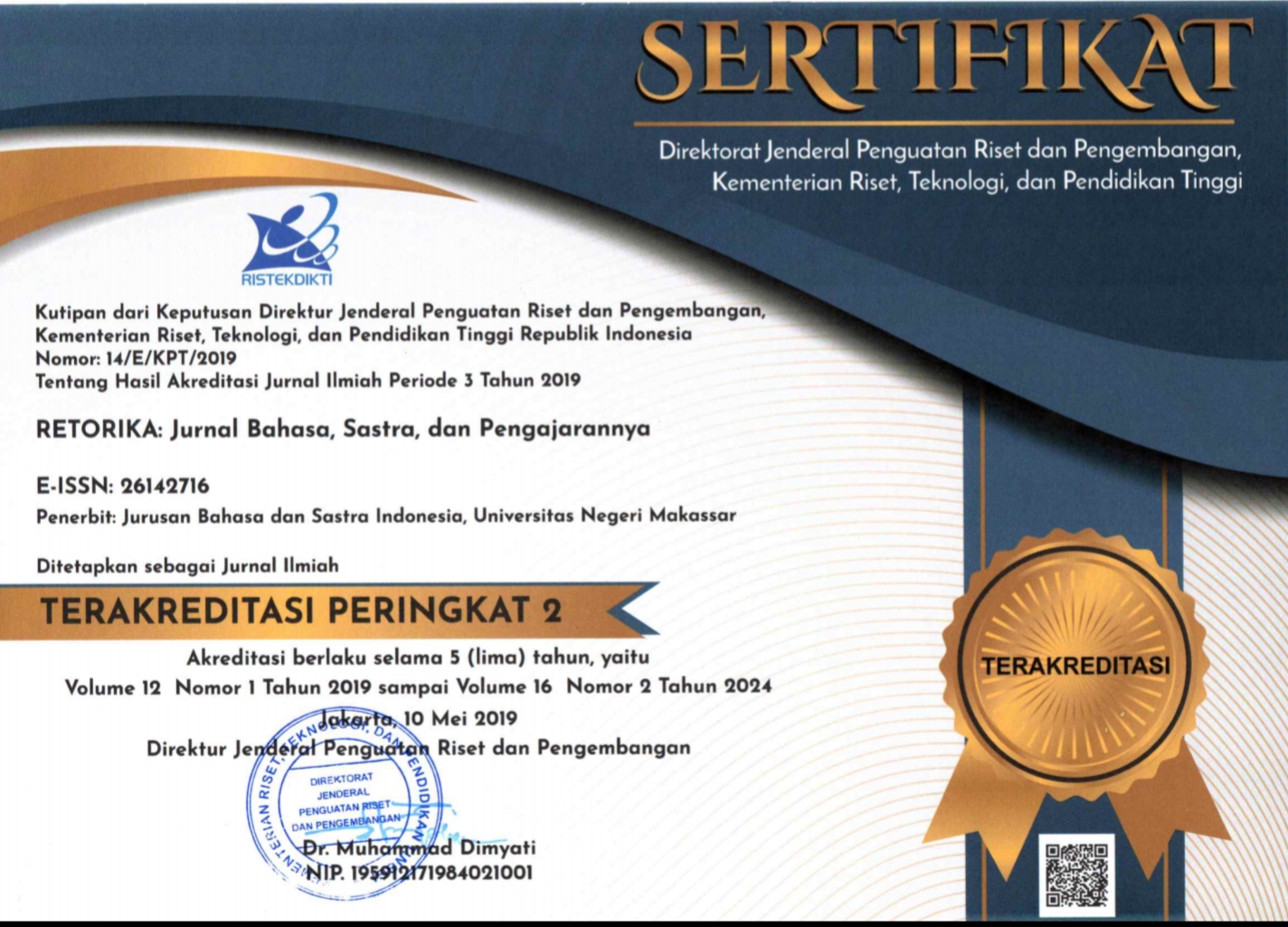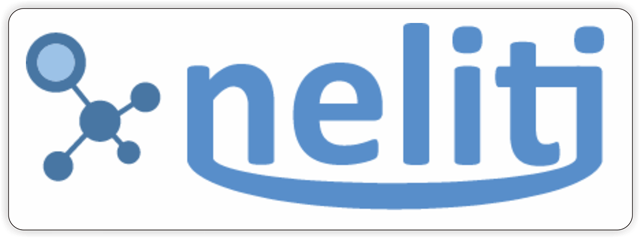POWER THROUGH THE USE OF PERSONAL PRONOUNS IN E-MAIL INTERACTIONS OF PEDOPHIL: CRITICAL DISCOURSE ANALYSIS
(1) Universitas Negeri Malang
(*) Corresponding Author
DOI: https://doi.org/10.26858/retorika.v16i1.37111
Abstract
Keywords
Full Text:
PDFReferences
Ali, M.K., Anne A.C., Munif, Z. F. B. (2011). Pronouns and Ideology in Newspaper Discourse. International Journal of Applied Linguistics and English Literature, 6(3), 168–179.
Argamon, S., Moshe, K., James, P., and Jonathan, S. (2009). Automatically profiling the author of an anonymous text. Communications of the ACM, 52(2), 119–123.
Blommaert, J dan Bulcaen, C. (2000). Critical Discourse Analysis. Annual Review of Anthropology, 29(1), 447–466.
Chilton, P & Schäffner, C. (1997). Discourse and politics. In T. A. van Dijk (Ed.) (Discourse Studies: A Multidisciplinary Introduction). SAGE. In Discourse as social interaction: discourse as social interactions (Vol. 2, pp. 206–230).
Collins, C. (1990). English Grammar. Collins ELT.
Dahnilsyah. (2017). The Implied Power through the Use of Personal Pronouns in Obama’s Speeches. International Journal of Educational Best Practices (IJEBP), 1(2), 59–71.
Fairclough, N., Mulderrig, J., & Wodak, R. (2011). In T. van Dijk (Ed.). In Discourse studies: A multidisciplinary introduction (2nd ed.,. In Critical discourse analysis. Sage.
Fairclough, N. (1989). Language and power. Longman.
Fairclough, N. L. (2003). Analyzing Discourse: Textual Analysis For Social Research. Amazon.
Håkansson, J. (2012). The Use of Personal Pronouns In Political Speeches: A Comparative Study of The Pronominal Choices of Two American Presidents (Lecture notes). Linnaeus University, Småland, Sweden.
Hala El Saj. (2012). Discourse Analysis: Personal Pronouns in Oprah Winfrey Hosting Queen Rania of Jordan. International Journal of Social Science and Humanity, 2(6), 529–532.
Hasan, J. . (2013). A Linguistic Analysis of In-group and out-group Pronouns in Hosni Mubarak’s Speech. Journal of Basrah Researches (Humanities Series), 38(2), 5–24.
Hlioui, A. (2020). A Cognitive and Systemic Functional Approach of The Use of Personal Pronouns In Legal Discourse: Life Insurance Contracts and Court Hearings As a Case Study. International Journal of Speech Language and The Law, 27(1), 99–101.
KPAI. (2018). FBI Sebut Angka Pedofilia Indonesia Tertinggi di Asia, KPAI Protes. Diambil 8 Agustus 2021, dari KPPAI website.
Lai, T. T., & Reduzan, N. H. B. (2013). Personal Pronoun in Chinese Language and Malay Language: A Contrastive Analysis. PENDETA, 4, 162–179.
Orvig, A.S., Hayde´e, M., Aliyah, M., Rouba, H., Jocelyne, Leber-Marin e, J. P. (2009). Dialogical Beginnings Of Anaphora: The use of third person pronouns before the age of 3. Journal of Pragmatics 3046, 1–24.
Ostermann, A. C. (2003). Localizing Power and Solidarity: Pronoun Alternation at An All-Female Police Station and A Feminist Crisis Intervention Center in Brazil. Language in Society, 32(3), 351–381.
Reynoldsa, T., Chuck, H., Hallgeir, S., Luke, Z., Tyler G. O., Roy F. B., Karl, A., dan J. K. (2020). Man Up and Take It: Gender Bias in Moral Typecasting. Organizational Behavior and Human Decision Processes, 161, 120–141. https://doi.org/https://doi.org/10.1016/j.obhdp.2020.05.002.
Rogers, R. (2011). An Introduction to Critical Discourse Analysis in Education Second Edition. Taylor & Francis.
Santoso, A. (2012). Studi Bahasa Kritis: Menguak Bahasa Membongkar Kuasa. Mandar Maju.
Slembrouck, S. (2001). Explanation, Interpretation and Critique in The Analysis of Discourse. Critique of Anthropology, 21, 3–57.
Van Dijk, T. (2002). Critical Discourse Studies: A Socio Cognitive Approach. Sage.
Wahyuningsih, S. (2018). A Discourse Analysis Personal Pronouns in Donald Trump’s Inauguration Speech. 2nd English Language and Literature International Conference (ELLiC).
Wodak, R. (1989). `Introduction’, in R. Wodak (ed.). In In Language, Power and Ideology (pp. 1–9). Benjamins.
Yilei, W dan Dezheng, W. (2021). History, Modernity, and City Branding in China: A Multimodal Critical Discourse Analysis of Xi’an’s Promotional Videos on Social Media. Social Semiotics. Retrieved from. https://doi.org/https://doi.org/10.1080/10350330.2020.1870405.
Article Metrics
Abstract view : 186 times | PDF view : 58 timesRefbacks
- There are currently no refbacks.
Copyright (c) 2023 ANTOK RISALDI

This work is licensed under a Creative Commons Attribution-NonCommercial 4.0 International License.
Published by:
Department of Indonesian Language, Faculty of Languages and Literature, Universitas Negeri Makassar in cooperate with Asosiasi Dosen Bahasa dan Sastra Indonesia (ADOBSI) and Ikatan Program Studi Pendidikan Bahasa dan Sastra Indonesia (IKAPROBSI).
Address: Department of Indonesian Language Office, DG Building Second Floor, UNM Parangtambung, Daeng Tata Raya Street, Makassar, South Sulawesi, Indonesia
 Email: retorika@unm.ac.id
Email: retorika@unm.ac.id

RETORIKA: Jurnal Bahasa, Sastra,dan Pengajarannya is licensed under a Creative Commons Attribution-NonCommercial 4.0 International License.
















